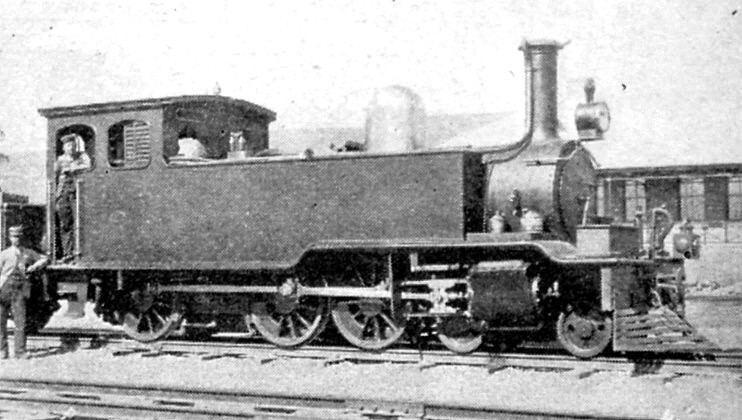Power type Steam Build date 1887 | Serial number 324-325 Total produced 2 | |
 | ||
Designer Nasmyth, Wilson & Company Builder Nasmyth, Wilson & Company | ||
The Pretoria-Pietersburg Railway 35 Tonner 4-6-0T of 1887 was a South African steam locomotive from the pre-Union era in Transvaal.
Contents
- The Pretoria Pietersburg Railway
- Origin and manufacturer
- Pretoria Pietersburg Railway
- NZASM
- Imperial Military Railways
- Central South African Railways
- Industry
- Illustration
- References
The Lourenco Marques, Delagoa Bay and East Africa Railway in Mozambique placed two tank locomotives with a 4-6-0 Tenwheeler type wheel arrangement in service in 1887. One of them was sold to the Pretoria-Pietersburg Railway in the Zuid-Afrikaansche Republiek in 1897. The 35 Tonner locomotive was not classified, but named Portuguese and referred to by name.
The Pretoria-Pietersburg Railway
The Pretoria-Pietersburg Railway Company (PPR), incorporated in London on 13 May 1896 with a capital of £500,000, constructed a railway which operated northwards from Pretoria West via Warmbad and Nylstroom to Pietersburg. The 176-mile long (283-kilometre) railway was constructed under a concession granted by the government of the Zuid-Afrikaansche Republiek (ZAR) to Hendrik Jacobus Schoeman on 30 October 1895. Construction commenced in 1897 and the first 80 miles (130 kilometres) to Nylstroom was opened to traffic by 1 July 1898. Pietersburg was reached on 31 May 1899.
Origin and manufacturer
The Lourenco Marques, Delagoa Bay and East Africa Railway (the Delagoa Bay Railway) in Mozambique placed two tank locomotives with a 4-6-0 Tenwheeler type wheel arrangement in service in 1887, built by Nasmyth, Wilson and Company and numbered 3 and 4.
Pretoria-Pietersburg Railway
Ten years later, in 1897, the Delagoa Bay's engine no. 3 was sold to the PPR. The locomotive was not classified or numbered by the PPR, but named Portuguese. It became commonly known as the Portuguese Tank.
Since the first part of their railway to Nylstroom was still being built, the PPR employed the Portuguese on construction work and general service. The locomotive had the honour to haul the first revenue-earning train between Pretoria and Nylstroom in July 1898.
NZASM
As a result of the outbreak of the Second Boer War and since the PPR was owned by a British registered company, the railway and its rolling stock were seized by the ZAR government in October 1899, only five months after the line to Pietersburg was completed. The railway was then briefly worked by the Nederlandsche-Zuid-Afrikaansche Spoorweg-Maatschappij (NZASM).
Imperial Military Railways
All railway operations in the two Boer Republics, the ZAR and the Orange Free State, were taken over by the Imperial Military Railways (IMR) in late 1899 and were operated as a single railway system for the duration of the war.
Central South African Railways
The engine Portuguese survived the war. At the end of the war in 1902, the IMR was transformed into the Central South African Railways (CSAR).
Industry
In 1908, the CSAR sold the Portuguese to the Olifantsfontein Brick and Tile Company for £750. It was used there as a yard shunting locomotive for the remainder of its working years.
Illustration
The pictures illustrate the Portuguese at work during construction of the railway to Pietersburg.
